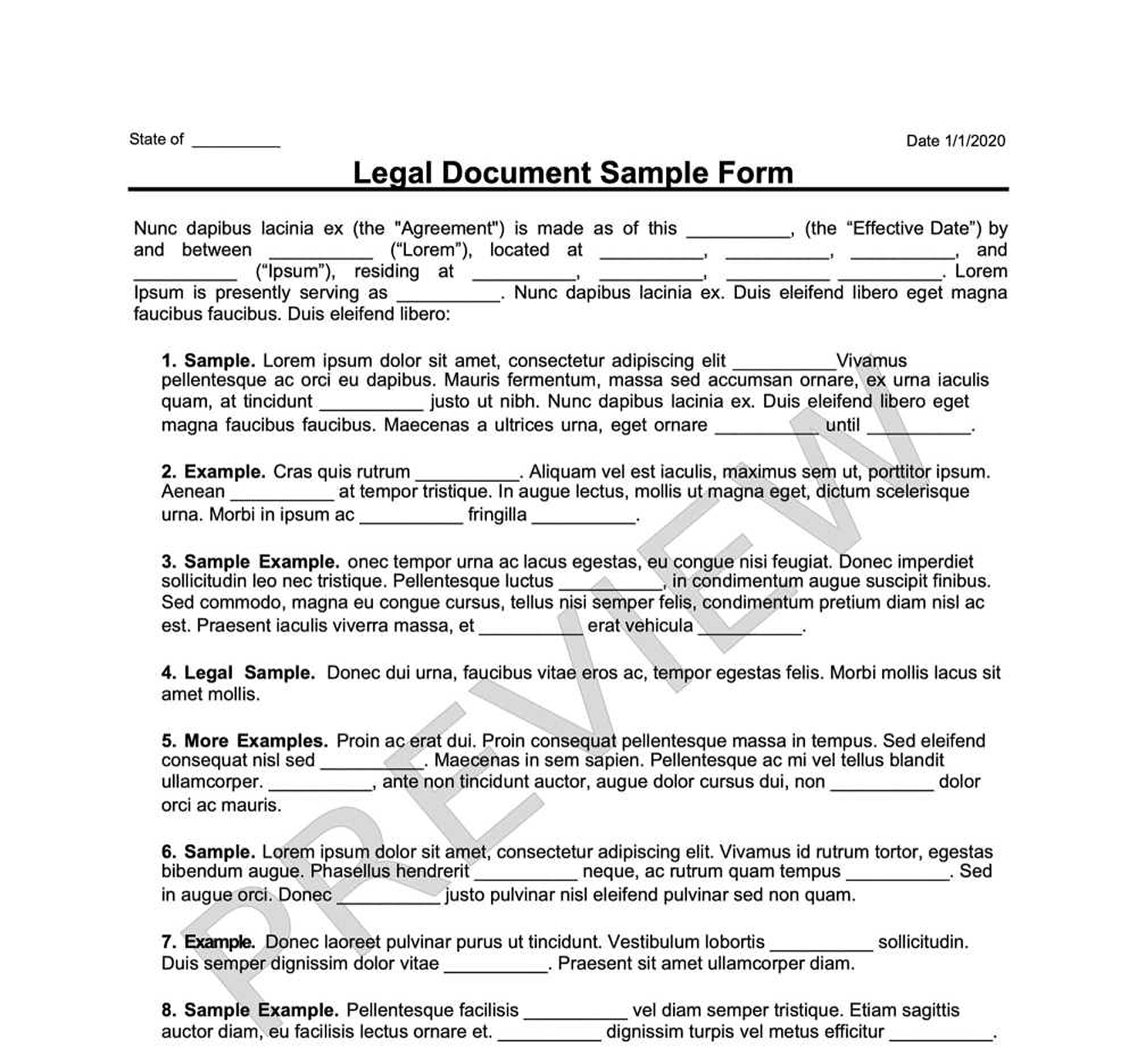Motor Vehicle Accident Release
A Liability Waiver is entered into by two parties of whom one of them releases the other of having liability claimed against them.

How it Works
Build your selected document.
Answer a few simple questions with step-by-step instructions.
Print & download forms instantly. Sign & make it legal.
What Is a Motor Vehicle Accident Release?
In the same way accidental injuries happen, so do accidental property damages. Alternatively, you may believe the other party is at fault for breaching a contract. Going to court to settle these kinds of disputes can be incredibly expensive. To protect your company from being sued, you could ask your customers to sign a Liability Waiver.
In addition to businesses, many individuals also use one to protect themselves. Some of the liabilities this document can prevent include car accidents, accidental injuries on your premises, or injuries caused by an animal that you own.
What is a Liability Waiver?
A Liability Waiver is a contract between two parties, usually a business and a customer. The latter acknowledges the potential for risks, injuries, and damages but agreeing not to sue the company if any should occur. Signing this document helps both parties avoid potential hassle and settle everything on their own terms. It can be used to resolve any past or future damages and injuries.
There are several versions of this agreement, one of which is used as a release for making claims against the other party. For example, it may apply to property damages caused by construction works, or if someone borrows your car and gets in a car wreck.
Other Names for Liability Waiver
Depending on your state, a Liability Waiver may also be known as:
-
Conditional and Unconditional Waiver Form
-
General Waiver
-
Legal Release
-
Release of Liability Agreement
-
Waiver of Liability Agreement
Who Needs a Liability Waiver?
The short answer is any business involved in injury- or risk-related activities should have a Liability Waiver. Although this is the territory of large companies in the past, just about any company wanting to minimize civil claims' risks can do so nowadays. If a client’s property is somehow damaged, this document clears the business of liability. Most importantly, intentional and at-fault damages are not covered.
However, businesses aren’t the only ones that could use this agreement. In the event of a car accident, both parties involved can choose to settle things outside the court system by signing a Liability Waiver. Some states require this document when selling a car. Until the title is officially transferred, you could be liable for any injuries suffered by the buyer.
Without this document, you risk the possibility of getting sued and losing a lot of money. To prevent this, make sure you protect your business and property with a Liability Waiver.
Why Use Swyft Forms for Your Liability Waiver?
Customized for you, by you
Create your own documents by answering our easy-to-understand questionnaires to get exactly what you need out of your Liability Waiver.
Right for your state
Each document on Swyft Forms is customized for your state.
How to Create a Liability Waiver with Swyft Forms?
Being involved in any lawsuit is not fun. With the help of a Liability Waiver, you can protect yourself.
Let Swyft Forms help with our extensive library of attorney-vetted legal forms. The process is fast and easy. All you have to do is fill out our easy-to-understand questionnaire. Once complete, simply download your form as a PDF or Word document from your secure online account.
What Information Will I Need to Create My Liability Waiver?
To create your document, please provide:
-
Personal Information: Name of the person promising not to sue.
-
Amount of Money: The amount given as consideration.
-
Effective Date: The date the document goes into effect.
-
Assumption of Risk: The signatory understands and accepts the potential risks and dangers.
-
Right to Attorney: Both parties have the right to have their attorney inspect the document for fairness.
-
Parent or Guardian Signature: If the releasor is a minor, a parent or legal guardian will have to get involved and sign the document. However, this requirement may vary from state to state.
Liability Waiver Terms
-
Releasor: The party that is promising not to make liability claims against the other party
-
Releasee: The party at risk of liability claims
-
Consideration: Money or something of value promised to the releaser for signing the document
-
Event/Incident Description: Detailed account of the incident or event that requires a Liability Waiver
Liability Waiver Signing Requirements
A Liability Waiver must be signed by both parties, the releasor, and the releasee. In general, the document doesn’t need to be notarized, but you can always choose to have the signatures notarized to prevent future claims to the contrary. Most of all, make sure to review it carefully before signing.
What to Do with Your Liability Waiver?
When your Liability Waiver is ready on Swyft Forms, you can print it as many times as needed. Keep the copies in your private records and give them to customers or whoever else you would like to enter into this agreement. You may also want to have your lawyer check and see if everything on the agreement is in order.
Other Names for Motor Vehicle Accident Release
- Motor Vehicle Accident Release Form
- Motor Vehicle Accident Release Document
- Motor Vehicle Accident Release Agreement
- Motor Vehicle Accident Release Contract
- Motor Vehicle Accident Release Template
- Motor Vehicle Accident Release Checklist
Who Needs a Motor Vehicle Accident Release?
Why Use Swyft Forms for Your Motor Vehicle Accident Release
Customized for you, by you
Specific to Your Jurisdiction
Why choose Swyft Forms?
Create professional documents for thousands of purposes.
Make unlimited documents and revisions.
Our documents are vetted by lawyers and are applicable to all 50 states.
